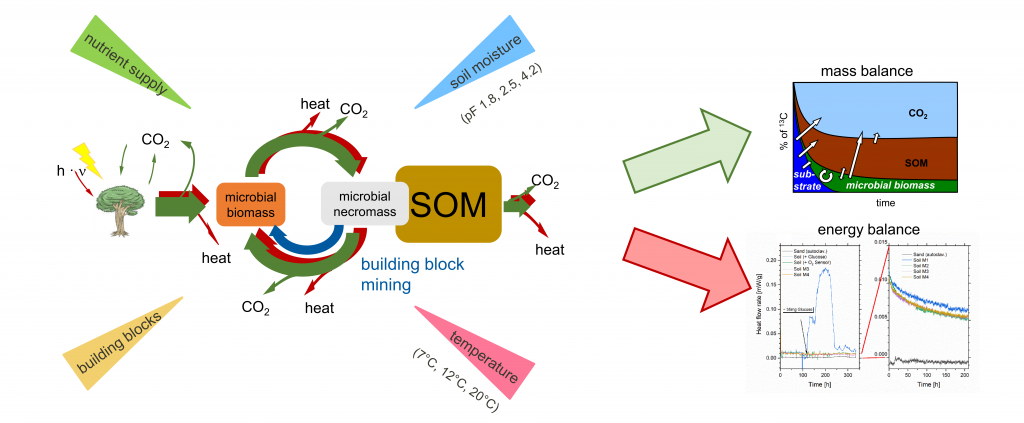Thermodynamics of microbial turnover of organic compounds in soil – matter and energy flux under varying environmental conditions (water, nutrient availability, temperature)

TherMic will focus on the effects of boundary conditions (e.g. temperature, availability of water, and nitrogen sources) on processes related to energy use, retention, and microbial growth. They will affect EUE, CUE, and the maximum capacity of the soil system for energy dissipation, SOM formation, and stabilization. The basic hypothesis is that we can predict these changes in the framework of irreversible thermodynamics.
This results in the following objectives:
- To combine calo-respirometric and mass balance approaches using stable-isotope labelled substrates to optimise the concomitant energy and matter flux analyses in soil systems as a basis to establish the link between matter and energy turnover.
- To quantify the effect of boundary conditions (water availability, temperature, nutrient availability) as well as the availability of biomass building blocks in the chemical structure of the substrate on CUE and EUE in systems with high and low microbial activity.
- To develop broadly applicable methods and instrumentation allowing combined calorimetric and mass balance analysis for soil systems, with the potential to be integrated into standardized soil test systems.
- To provide a predictive modelling framework for linking energy turnover, microbial biomass, and necromass formation to boundary conditions as well as general organic compound degradation in soil.
The main hypothesis and their implications for SOM formation and turnover are summarized in the graphical abstract. Depending on boundary conditions, changes of microbial activity and growth rate result in altered maintenance requirements and death rates of organisms (compare left and right column of the graphical abstract). This affects biomass yield and consequently the contribution of necromass to and energy retention in SOM. These changes are reflected in both energy and matter fluxes and their development over time.
Link to English scientific abstract
Link to German scientific abstract